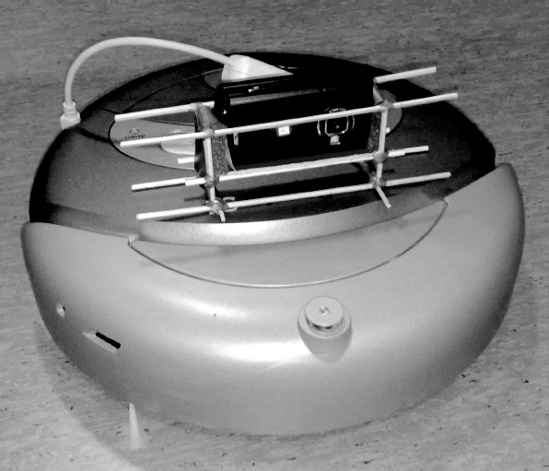11.7. Robotics
With a little creativity, a modern mobile phone can be used as a compact and capable robot brain. Besides having respectable computing power for an embedded device, the phone has the basic sensory functions built-in: the camera can function as eyes and the microphone as ears for the robot. Because of its small size, the phone can easily be mounted on various platforms for locomotion, which may be controlled, for instance, over Bluetooth.
Nowadays, using cheap off-the-shelf parts, one can start experimenting on robotics without any soldering. This approach was taken by a course on Artificial Intelligence that was organized by the Department of Computer Science at the University of Helsinki in 2007. In this course, a Nokia N80 mobile phone, which served as an eye for the robot, was mounted on a Roomba robotic vacuum cleaner – the resulting chimera is shown in Figure 11.12. Since one can control Roomba remotely by sending commands to it over a Bluetooth serial port, it is possible to build a fully autonomous, visually guided robot based on these two widely available components.
Figure 11-12. Nokia N80 mounted on a Roomba robotic vacuum cleaner

Students on the course were given a task to write a program that drives the robot through two gates, around a single pole and return through the gates back to the home base. To make the task easier for the students, the control ...
Get Mobile Python: Rapid Prototyping of Applications on the Mobile Platform now with the O’Reilly learning platform.
O’Reilly members experience books, live events, courses curated by job role, and more from O’Reilly and nearly 200 top publishers.

